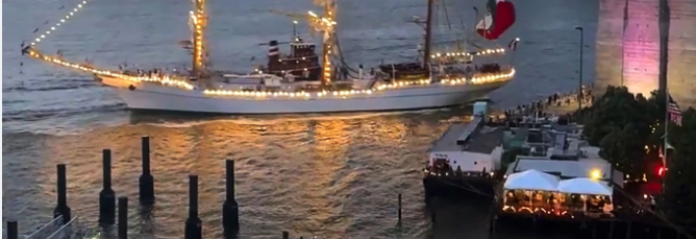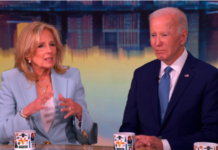It’s hard not to feel a knot in your gut reading about the Cuauhtémoc’s collision with the Brooklyn Bridge—a moment that should’ve been a proud ceremonial departure turned into a tragedy. And what’s more painful than the snapped masts, the twisted rigging, and the battered steel is the symbolism behind it all. A foreign vessel on American waters, in one of our nation’s most iconic cities, hits an American landmark—raising far more questions than answers, while our own systems stand by, slow to respond and quick to deflect.
At the heart of it, two young lives were lost. América Yamilet Sánchez, just 20 years old, and Adal Jair Maldonado Marcos, both serving aboard that Mexican Navy ship on what was meant to be a moment of national pride. And it is pride, after all, that seems to be hemorrhaging here—American pride, maritime accountability, and public trust.
The NTSB, by its own admission, is hamstrung while waiting for permission from the Mexican government to even step onboard the ship. The Cuauhtémoc, a 300-foot tall ship docked silently at Pier 36, now serves as an awkward, looming reminder of a bureaucratic dance where the cost of diplomacy is delay—and possibly the truth.
Let’s be clear. The timeline they gave is harrowing. Four minutes. That’s how fast it all went down. From the tugboat’s initial maneuver to the moment steel met steel on the Brooklyn Bridge. The NYPD and FDNY were swift, thank God, but the entire scenario seems to play like a silent film where someone forgot to cue the safety systems we’re told are always watching. There’s no confirmed mechanical failure yet. No strong winds documented. So then, how? How does a ship lose control in one of the most surveilled and controlled waterways in the world?
🚨#BREAKING: Watch as a Massive Mexican navy ship crashes into the Brooklyn bridge with 200 passengers on board
Watch dramatic footage as a Mexican navy ship carrying 200 people crashes into the Brooklyn Bridge in New York. The vessel’s 150-foot masts… pic.twitter.com/OpyKpIRiJQ
— R A W S A L E R T S (@rawsalerts) May 18, 2025
And then here comes Chuck Schumer, standing at a microphone as he always does, casting blame in every direction but the right one. He pointed fingers at budget cuts and hiring freezes in departments that weren’t even involved—promptly corrected by the Department of Homeland Security. The US Coast Guard, contrary to Schumer’s dramatic insinuations, was fully staffed and its Vessel Traffic Service was operating normally. If the facts don’t fit the narrative, then maybe the narrative should change—not the facts. But for Schumer and his colleagues, the facts are inconvenient guests at the table of political theatre.
DESPICABLE Chuck Schumer suggests that the Mexican Navy ship crash into the Brooklyn Bridge was caused by President Trump and DOGE cuts. pic.twitter.com/R730dI9pnh
— DeVory Darkins (@devorydarkins) May 19, 2025
This tragedy is exactly what happens when we confuse accountability with optics. When investigations get tied up in red tape, and when political grandstanding replaces effective governance. Why are we accepting that our federal investigators must wait for permission from a foreign government to examine a vessel responsible for a deadly crash on our soil? When did American jurisdiction start taking a backseat on our own waterways?
CRASH COURSE: @SenSchumer blames @realDonaldTrump for Mexican navy ship slamming into Brooklyn Bridge — but it blows up in his face when @DHSgov shuts down his spin with cold, hard facts. pic.twitter.com/fW2nh0toKW
— Fox News (@FoxNews) May 20, 2025
It’s another example of how bloated government bureaucracy and international appeasement chip away at our sovereignty, one incident at a time. We watched an iconic American bridge take a hit. We saw sailors flung from broken masts. And we were told to be patient. Wait for the data. Wait for the report. Wait for the truth.







